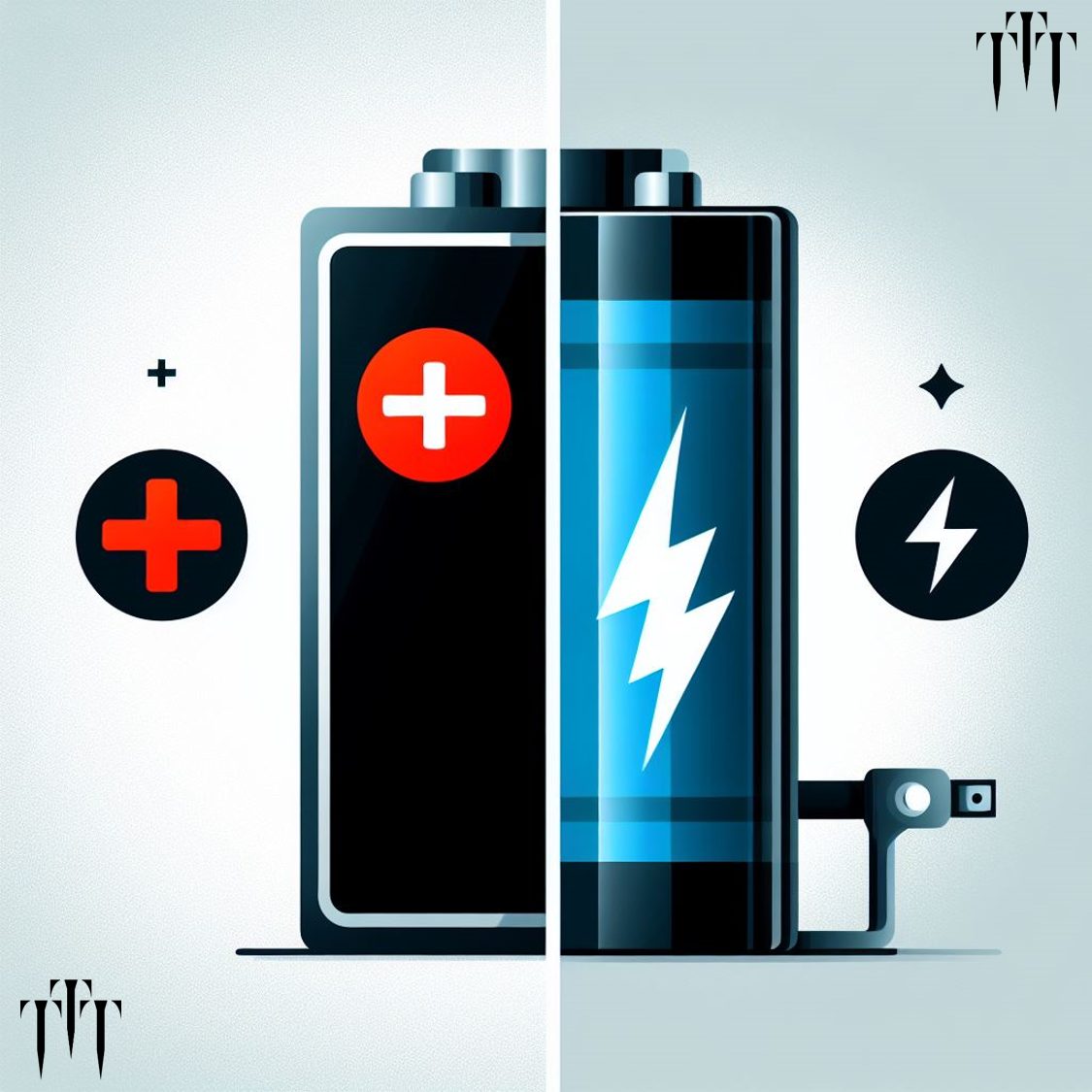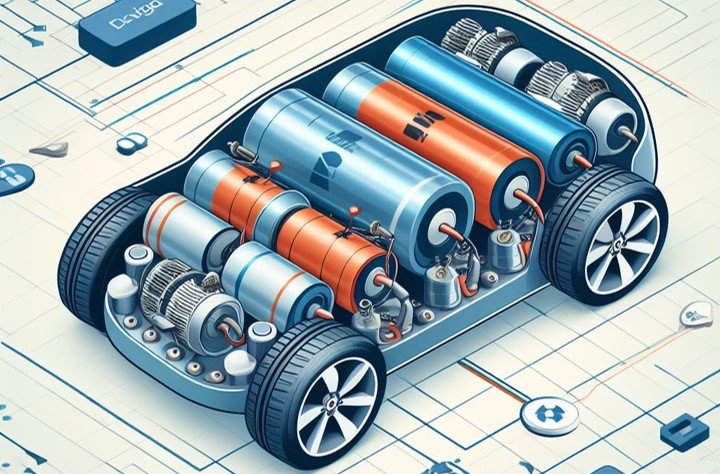Supercapacitors are revolutionizing energy storage by storing energy in an electric field, resulting in higher power density and faster charging times. This makes them ideal for applications requiring high bursts of energy, such as electric vehicles and grid storage. Supercapacitors are also more rugged and durable than batteries, with a longer cycle life and the ability to operate in extreme temperatures. With advancements in materials and technology, supercapacitors are becoming more accessible and affordable, paving the way for a greener, more sustainable future.
This article explores the revolutionary power of supercapacitors and their potential to transform industries such as transportation and renewable energy to achieve a sustainable future.
How supercapacitors differ from traditional batteries
Supercapacitors (also known as ultracapacitors or double-layer capacitors) are advanced components that can store a much larger electric field than regular capacitors. Their key difference lies in their capacitance, allowing them to store significantly more energy. Supercapacitors are excellent at quickly discharging stored energy, making them ideal for applications where rapid power delivery is crucial.
On the other hand, Batteries use a chemical reaction to store and release power. They consist of two electrodes (anode and cathode) with an electrolyte (solid, liquid, or gel) containing ions. The separator within the electrolyte allows ions to move from one side to the other during charging and discharging.
The table below indicates the comparison of supercapacitor vs battery based on technical parameters:
| Aspect | Supercapacitors | Batteries |
|---|---|---|
| Energy Storage | Higher energy density per unit volume | Lower energy density |
| Energy Discharging Rate | Rapid discharge (about 10x faster) | Slower discharge over longer periods |
| Lifespan | Longer lifespan | Shorter lifespan |
| Energy Charging Time | Rapid charging | Longer charging time |
Can supercapacitors replace batteries?
Supercapacitors and batteries both serve distinct purposes in energy storage and while they share similarities, they are not direct replacements for each other. Check below the advantages of supercapacitors and limitations:
- Advantages:
- High Power Density: Supercapacitors can deliver energy rapidly due to their high power density. They excel in applications where a quick burst of power is essential.
- Long Cycle Life: Supercapacitors can have many charge and discharge cycles without major degradation.
- Fast Charging/Discharging: They can accept and deliver charge much faster than batteries.
- Limitations:
- Low Energy Density: Supercapacitors store less energy per unit volume or mass compared to batteries.
- Voltage Limitations: Their cell voltage is typically lower than batteries.
- Dr. Yury Gogotsi, a materials scientist and expert in energy storage, emphasizes that supercapacitors are not direct replacements for batteries.
- Dr. John Miller, a researcher in energy storage technologies, states that supercapacitors are valuable for applications requiring high power, but their low energy density limits their use as primary energy sources.
Key Application Ares of Supercapacitor vs Battery
- Applications:
- Supercapacitors:
- Regenerative Braking: In hybrid and electric vehicles, supercapacitors capture energy during braking and release it for acceleration.
- Peak Load Shaving: They stabilize power grids by providing quick energy during peak demand.
- Backup Power: Supercapacitors ensure uninterrupted power during momentary outages.
- Batteries:
- Electric Vehicles: Batteries provide the necessary energy for driving range.
- Grid Storage: Large-scale batteries store renewable energy for later use.
- Portable Electronics: Batteries power smartphones, laptops, and other devices.
- Supercapacitors:
Recent advancements in supercapacitor technology
Advancements in Silicon Carbide-Based Supercapacitors:
Researchers have focused on silicon carbide (SiC) nanomaterials as promising candidates for supercapacitor electrodes. SiC exhibits unique properties, including a broad electrochemical stability range, exceptional mechanical strength, and resistance to extreme conditions.
- Synthesis Methods:
- Diverse synthesis techniques have been explored:
- Solid-State Synthesis: Creating SiC nanomaterials through solid-state reactions.
- Gas-Phase Synthesis: Producing SiC nanoparticles in gas-phase environments.
- Liquid-Phase Synthesis: Developing SiC nanomaterials in liquid solutions.
- Diverse synthesis techniques have been explored:
- Electrochemical Performance:
- SiC nanostructures and porous architectures play a pivotal role in enhancing specific capacitance and cycling stability.
- Researchers have investigated SiC-based composite materials, such as SiC/carbon composites and SiC/metal oxide hybrids, which show potential for elevating energy density.
Source: https://pubs.rsc.org/en/content/articlelanding/2024/nr/d3nr05050e/unauth
Startups working in supercapacitors:
- GODI Energy: GODI is a rapidly growing player in the Lithium-ion battery sector and has recently expanded its focus to supercapacitors. It aims to build India’s first high-powered supercapacitor with a 3000 Farad capacity at their manufacturing hub in Hyderabad. They plan to combine these supercapacitors with battery packs to extend the longevity of batteries in electric vehicles and renewable energy storage systems.
- Surge Supercapacitor: It was founded in year 2021. Surge Supercapacitors is honored to be India’s largest ultracapacitor manufacturer, producing over 25 MWh per year. Their manufacturing facility spans over 8000 square feet.
- Allotrope Energy: Allotrope Energy is a British startup. It develops Ionic Supercapacitors. These supercapacitors combine high surface area carbon with advanced electrolytes. They provide both high energy and high power electric double-layer capacitors (EDLC).
- Capacitech: Capacitech specializes in building Cable-Based Capacitors (CBC). CBCs are physically flexible, allowing them to wrap around wires or circuit boards. They offer space-saving advantages compared to traditional supercapacitor technologies. Capacitech’s products find applications in electronics, solar power, and energy storage.
- EnergoPlus Tech: EnergoPlus Tech produces a Hybrid Capacitor. Their hybrid capacitor technology could have implications for energy storage systems.
- FlexCap Energy: FlexCap Energy works on a Flexible Supercapacitor. Their flexible supercapacitors find applications in various industries, including electric vehicles.
Conclusion: The promising future of supercapacitors
In summary, ongoing research and collaborations are essential for unlocking the full potential of supercapacitors, making them integral components of our sustainable energy infrastructure. Research focuses on improving supercapacitor materials, synthesis techniques, and performance. These advancements contribute to a more sustainable and efficient energy storage landscape.















[…] supercapacitors offer the best of both worlds – supercapacitors (EDLC) and lithium-ion batteries. These are also called Li-ion capacitors. Hybrid supercapacitors […]